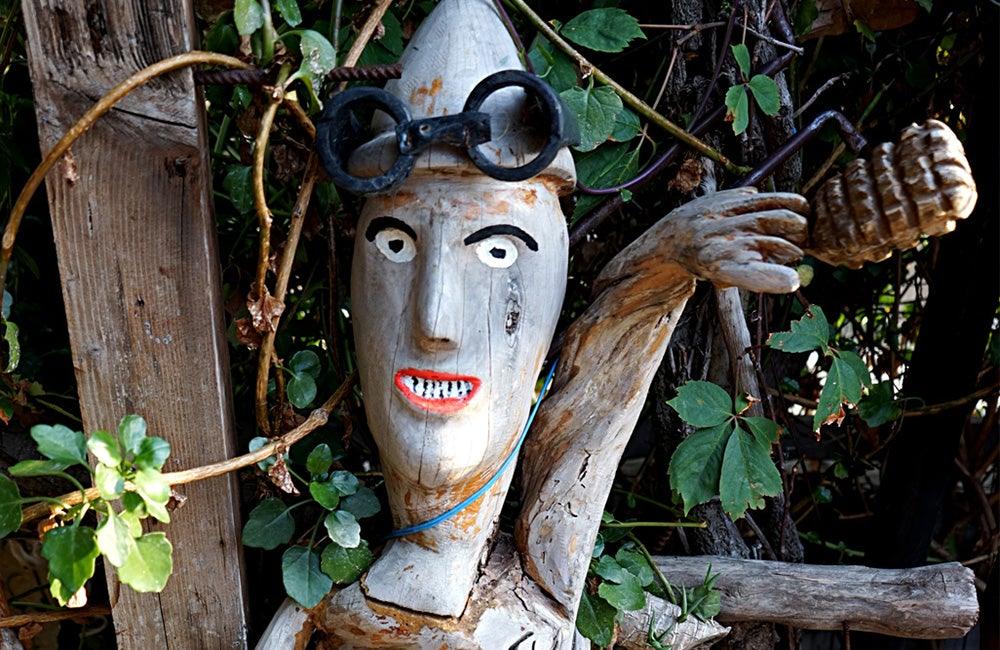First published: Spring 2018
On the edge of Sardiniai in the Mediterranean, on one of the most stunning rocky coasts of this mysterious island that has been filled with turbulent history, in the Gulf of Orosei, is a once-forgotten fishing village. Today it is known as Cala Gonone and is frequented by tourists from around the world. It is where a great winemaker and, until recently, a well-hidden carver called Bartolomeo Mereu (born in 1935 in Dorgali) lives, in his house with a small garden. He is an expert not only in wine but, curiously enough, also in ice cream. He sold the stuff for decades in his café, and from his mobile carriage nearby Dorgali.

Bartolomeo Mereu, card figure
Dorgali is a peculiar mountain town on the slopes of Monte Bardia, famous for its craftsmanship in traditional Sardinian textiles, leather goods, ceramics, jewellery, knives and musical instruments. Here, Mereu is known by his nickname, taken from his favourite flavour of ice cream: Banana. However, he had to earn money to set up his business by the hard work of a common miner in the Belgian, and later in the German mines where he had worked, deep beneath the earth, for ten years. When he retired around 2005, he returned to his childhood hobby. Finding and gathering interestingly shaped objects, and transforming them into art. Forms emerge of human heads, whole figures or animals. Wood is scarce in Sardinia, especially in the mountain region of Barbagia that surrounds Mereu’s birthplace. Trees with carvable wood are rarely found – instead there is an abundance of dense evergreen shrubs in the form of prickly macchia, covered with myrtle and a great deal of juniper. By necessity, this is Mereu’s preferred material for his unconventional work. There is a rich tradition of folklore in this until-recently isolated island world, with its deeply rooted and distinctive culture that was inherited from the mysterious builders of nuraghes (the megalithic towers that have come to symbolise Sardinia) as well as the Phoenicians, Carthaginians, Etruscans and Romans. This tradition is reflected in the folklore in a completely original and unique way.
However, the interconnection of Mereu’s carving with ancient magic and mysticism does not comply with the written or unwritten technological rules strictly respected by numerous local folk craftsmen – for example in the stereotypical production of carved masks for the annual carnival in nearby Mamoiada, or as a sought-after souvenir. His work is much freer, more specific and, above all, it reflects his rich imagination, individual inner world and extroverted psychological foundation rather than typical aspects of the rooted Sardinian tradition. His artwork can be seen as a characteristic, self-sustaining expression of a spontaneous unskilled creator who, considering his unrepeatable creativity, peculiarity, strong emotional charge and unexpected ways of carving, can be considered a genuine and authentic “raw” artist. Few of them live in Sardinia nowadays, and they are truly outstanding personalities.
This is an article extract; read the full article in Raw Vision #97




